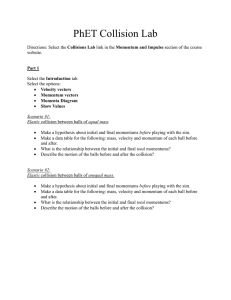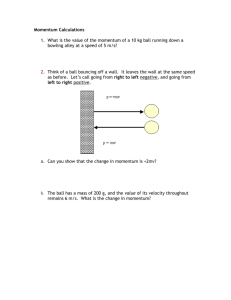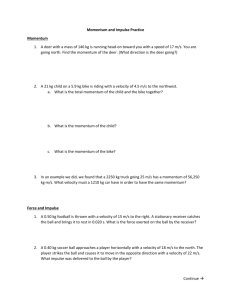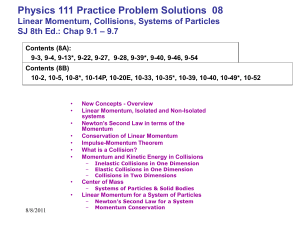momentumlabcbr
advertisement
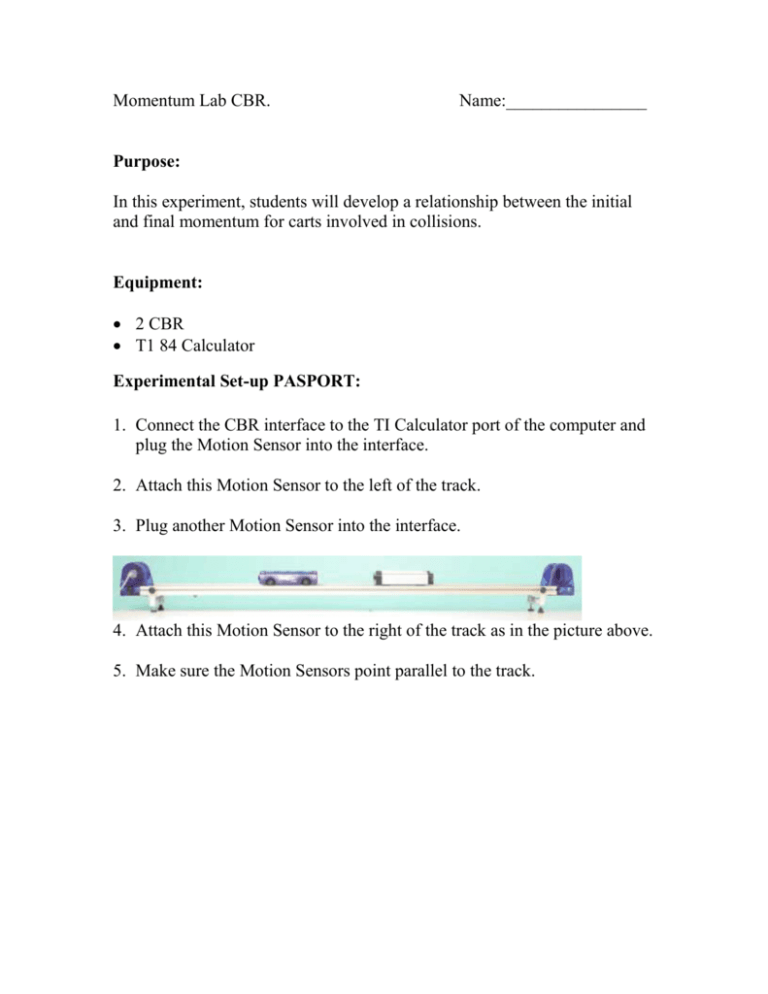
Momentum Lab CBR. Name:________________ Purpose: In this experiment, students will develop a relationship between the initial and final momentum for carts involved in collisions. Equipment: 2 CBR T1 84 Calculator Experimental Set-up PASPORT: 1. Connect the CBR interface to the TI Calculator port of the computer and plug the Motion Sensor into the interface. 2. Attach this Motion Sensor to the left of the track. 3. Plug another Motion Sensor into the interface. 4. Attach this Motion Sensor to the right of the track as in the picture above. 5. Make sure the Motion Sensors point parallel to the track. Pre-Lab Questions: 1. How do you calculate the total momentum of a system that involves to objects? For example, how do you calculate the total momentum of two cars as they are about to collide? 2. What are the units? 3. What are some other collisions besides "head-to-head" collisions? Data Collection Procedure: 1. Find the mass of each cart and enter into Data Table 1 below. 2. Repeat steps 3-6 for a total of 10 collisions varying the velocities of the carts. Data Table 1 Mass of Cart 1 (kg) Mass of Cart 2 (kg) Data Table 2 Initial Final Collision Velocity Velocity Velocity Velocity # 1 2 1 2 1 2 3 4 5 6 7 8 9 10 Analysis 1. Calculate the total initial momentum and total final momentum for each of the 10 collisions. Add to the chart Conclusions/Questions: 1. Discuss the momentum of two carts before a head-on collision. Compare to the momentum after the collision as they move away in opposite directions. 2. Discuss the initial and final momentum of a firecracker before and after it explodes. 3. In billiards, a cue ball strikes a stationary eight ball head on. If the eight ball is half the mass of the cue ball and if the cue ball becomes stationary immediately after the collision, what is the velocity of the eight ball immediately after the collision?







